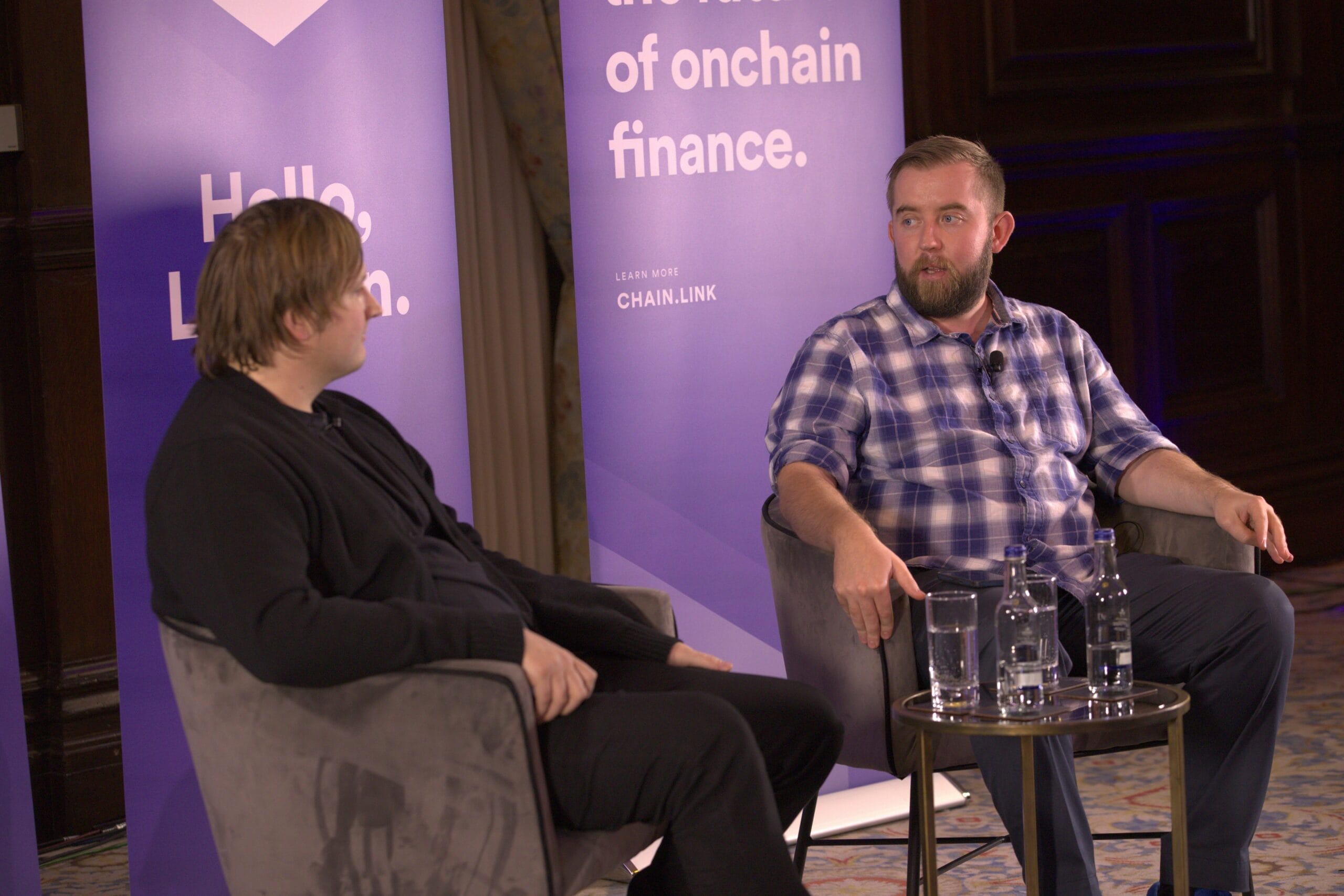During a recent London-based meetup, Chainlink co-founder Sergey Nazarov and Avara founder Stani Kulechov outlined the path toward creating a global internet of contracts where DeFi and TradFi converge.
Chainlink is the industry-standard decentralized computing platform which has enabled over $10 trillion in onchain transaction value. Aave Protocol is a non-custodial, open-source decentralized liquidity protocol that enables users to supply and borrow crypto assets. Both early blockchain adopters, Nazarov and Kulechov discussed what it will take for traditional finance (TradFi) to embrace the borderless, transparent financial system they’re working to build.
Kulechov expects TradFi’s blockchain adoption will start slowly, then accelerate as the technology continues to prove itself. “At some point it becomes more than obvious that it’s a better way to do finance onchain,” he said. “We can, over the years, prove that it’s a better way to make finance more efficient and equitable because everyone has the same access to information.”
Nazarov agreed that setting a new standard for transparency and reliability that minimizes counterparty risk is what will ultimately draw more users to DeFi.
“It’s just about how we can make a better place to actually do business,” said Kulechov, highlighting one of the major benefits of an onchain execution environment is “the rules apply to everyone the same way.”
Nazarov and Kulechov believe that applying these same standards to tokenized real-world assets will also attract TradFi to blockchain. Chainlink provides a comprehensive set of oracle services including Cross-Chain Interoperability Protocol (CCIP) and Proof of Reserve (PoR) that are critical for creating and securing tokenized assets and stablecoins that can scale onchain finance to billions of global users.
Kulechov described an inevitable “cycle that feeds itself,” in which more real-world assets are brought onchain where users will want to unlock their liquidity, driving demand for stablecoins. Nazarov agreed that bringing more assets onchain will “create a real diversity of collateral” that will enhance DeFi’s stability.
He explained how Chainlink’s security model is designed to support DeFi as more value flows onchain from traditional finance. “Chainlink is really made to scale its security relative to the value it secures over time, and I think that’s also the thing that makes it attractive for the capital markets,” Nazarov said.
Both he and Kulechov anticipate a multi-chain future where thousands of different blockchains and L2s will need a global standard to interact with each other. Leveraging Chainlink’s time-tested oracle infrastructure, CCIP allows digital assets to flow freely between private bank chains and public DeFi applications, empowering traditional financial institutions to create new use cases for digital assets with benefits like fractionalization and programmability.
“The same security model that moves data into chains can absolutely move data across chains,” Nazarov said.
“I think this is where CCIP is fascinating,” said Kulechov. “Because with CCIP you could trade in another network and do financial transactions without actually moving all that capital into that network.”
He foresees CCIP advancing blockchain interoperability the way telecommunications evolved from manually operated switchboards. “Today we are making calls using different telecommunication networks without actually realizing that there’s some sort of a switch in the network. And obviously that’s all based on trust, but the blockchain version of this is trustless, verified, and that’s the future.”
Watch the full conversation.


